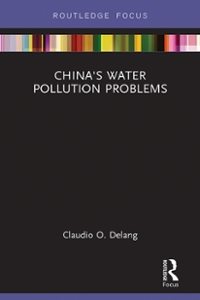Question
In order to build a hunger and poverty free Bangladesh, the highest priority has been given to the development of agriculture and the welfare of
In order to build a hunger and poverty free Bangladesh, the highest priority has been given to the development of agriculture and the welfare of the farmers. In the light of Vision 2021, 7th Five Year Plan, National Agricultural Policy 2018, Sustainable Development Goals, Deltaplan-2100 and other planning documents, the government is making all out efforts for the overall development of the agriculture sector. In FY2019-20, the target of food grains production is around 454.04 lakh metric tons (MT) which was 415.74 lakh MT in FY2018-19. In FY2019-20, the revised budget for public food grains procurement has been net at 22.69 lakh MT. In FY2019-20 the revised budget for govt. food grain import was 5.03 lakh MT. On the other hand, in private sector a total of 46.21 lakh MT food grains (0.04 lakh MT rice and 46.17 lakh MT wheat) was imported up to February 2020. In FY2019-20, a total of Tk.15,092.17 crore has been disbursed
till February 2020 against the target of Tk.24,124 crore, which is about 62.56 percent of the target. The global Coronavirus (COVID-19) pandemic has affected the agriculture sector in Bangladesh too. Ensuring food and nutrition security for the large population of Bangladesh and protecting the lives and livelihoods of farmers, farm labourers and relevant others engaged in the agriculture sector are the main challenges now facing the agricultural sector given the forecast of imminent famine in the post Corona world. In order to increase the productivity in response to the effects of Corona, subsidies on agricultural inputs have been increased, agricultural inputs have been made available and the scope of agricultural credit has been facilitated. Considering the significance of increased productivity of agricultural products, an amount of Tk. 9,000 crore was allocated in budget of FY2019-20 and Tk. 9,500 crore in FY2020-21 to provide subsidy on fertiliser and other agricultural inputs. In FY2018-19 fish production was 43.84 lakh MT from internal water resource and sea whereas the target for FY2019-20 was 44.85 lakh MT. The number of livestock and poultry rose to 557.98 lakh and 3,532.23 lakh respectively in FY2019-20 up to February 2020.In FY2019-20, (up to February) 1.08 crore doses of livestock vaccine and 17.38 crore doses of poultry vaccines were produced.
Read the above case carefully and broadly answer the following questions
Total Marks-20
(1) What are the objectives of agriculture in Bangladesh? What steps do you think should be taken for the development of agriculture sector in Bangladesh? How does an agricultural subsidy work?
(2) "Although the share of the animal farming sub-sector in GDP is small but it makes immense contribution towards meeting the requirements of daily essential animal protein." Explain. What are the challenges of poultry farming in Bangladesh? Is poultry farming decent for the environment?
Step by Step Solution
There are 3 Steps involved in it
Step: 1

Get Instant Access to Expert-Tailored Solutions
See step-by-step solutions with expert insights and AI powered tools for academic success
Step: 2

Step: 3

Ace Your Homework with AI
Get the answers you need in no time with our AI-driven, step-by-step assistance
Get Started


